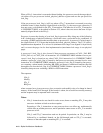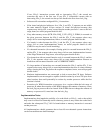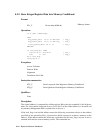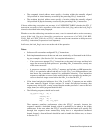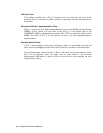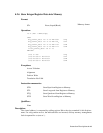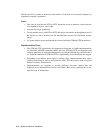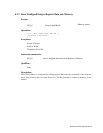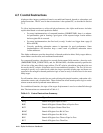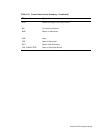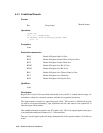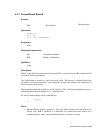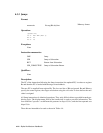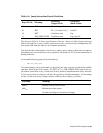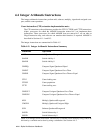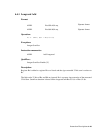
4–18 Alpha Architecture Handbook
4.3 Control Instructions
Alpha provides integer conditional branch, unconditional branch, branch to subroutine, and
jump instructions. The PC used in these instructions is the updated PC, as described in Section
3.1.1.
To allow implementations to achieve high performance, the Alpha architecture includes
explicit hints based on a branch-prediction model:
• For many implementations of computed branches (JSR/RET/JMP), there is a substan-
tial performance gain in forming a good guess of the expected target I-cache address
before register Rb is accessed.
• For many implementations, the first-level (or only) I-cache is no bigger than a page (8
KB to 64 KB).
• Correctly predicting subroutine returns is important for good performance. Some
implementations will therefore keep a small stack of predicted subroutine return
I-cache addresses.
The Alpha architecture provides three kinds of branch-prediction hints: likely target address,
return-address stack action, and conditional branch-taken.
For computed branches, the otherwise unused displacement field contains a function code
(JMP/JSR/RET/JSR_COROUTINE), and, for JSR and JMP, a field that statically specifies the
16 low bits of the most likely target address. The PC-relative calculation using these bits can
be exactly the PC-relative calculation used in unconditional branches. The low 16 bits are
enough to specify an I-cache block within the largest possible Alpha page and hence are
expected to be enough for branch-prediction logic to start an early I-cache access for the most
likely target.
For all branches, hint or opcode bits are used to distinguish simple branches, subroutine calls,
subroutine returns, and coroutine links. These distinctions allow branch-predict logic to main-
tain an accurate stack of predicted return addresses.
For conditional branches, the sign of the target displacement is used as a taken/fall-through
hint. The instructions are summarized in Table 4–3.
Table 4–3: Control Instructions Summary
Mnemonic Operation
BEQ Branch if Register Equal to Zero
BGE Branch if Register Greater Than or Equal to Zero
BGT Branch if Register Greater Than Zero
BLBC Branch if Register Low Bit Is Clear
BLBS Branch if Register Low Bit Is Set
BLE Branch if Register Less Than or Equal to Zero
BLT Branch if Register Less Than Zero



